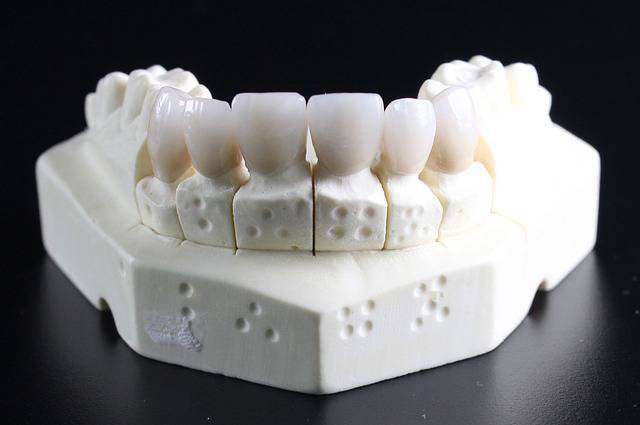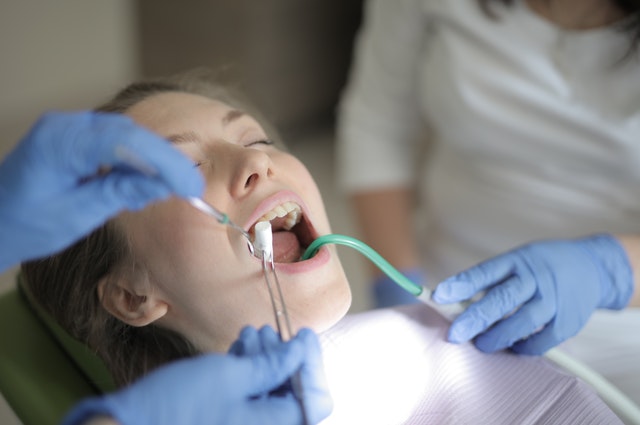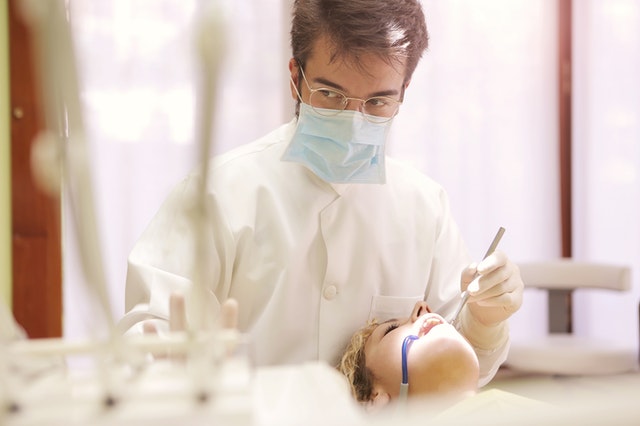Dental Care
What You Must Know About Dental Problems and Oral Health

Discover the importance of dental problems and oral hygiene. Learn about common dental issues, prevention methods, treatment options, and the latest dental technologies.
Oral health is a crucial component of overall health and well-being. The condition of your mouth, teeth, and gums can affect your general health, influencing everything from your ability to eat and speak to your risk of developing systemic diseases. In this comprehensive guide, we will delve into the intricacies of dental problems and oral health, covering everything from common dental issues to preventive measures, treatment options, and the latest advancements in dental care.
The Importance of Oral Health
Oral health is more than just having a bright smile. It plays a significant role in your overall health. Poor oral health can lead to dental and medical problems such as gum disease, infection, bone loss, heart disease, strokes, and more. Regular dental check-ups and good oral hygiene can prevent these issues, ensuring that your teeth and gums remain healthy throughout your life.Systemic Impact of Oral Health
Oral health is closely linked to several chronic conditions:- Cardiovascular Disease: Studies have shown a connection between gum disease and heart disease. Inflammation and infections in the mouth can contribute to heart conditions, clogged arteries, and strokes.
- Diabetes: People with diabetes are more susceptible to gum disease. Infections in the gums can make it harder to control blood sugar levels.
- Respiratory Infections: Bacteria in the mouth can be inhaled into the lungs, causing infections such as pneumonia.
- Pregnancy Complications: Poor oral health is linked to preterm birth and low birth weight.
Common Dental Problems
Understanding common dental problems is the first step in prevention and treatment. Here are some of the most prevalent issues:1. Tooth Decay (Cavities)
Tooth decay, also known as cavities or dental caries, is one of the most common chronic diseases worldwide. It occurs when the enamel, the hard outer layer of the tooth, is destroyed by acid produced by bacteria in the mouth. These bacteria feed on sugars from food and drink, producing acids that erode the enamel. Prevention and Treatment:- Prevention: Good oral hygiene, including regular brushing with fluoride toothpaste and flossing, can prevent cavities. Limiting sugary foods and drinks and regular dental check-ups are also crucial.
- Treatment: Treatment options include fillings, crowns, and, in severe cases, root canals or extractions.
2. Gum Disease (Periodontal Disease)
Gum disease is an infection of the tissues that hold your teeth in place. It is usually caused by poor brushing and flossing habits that allow plaque—a sticky film of bacteria—to build up on the teeth and harden. Stages:- Gingivitis: The mildest form of gum disease, causing red, swollen gums that bleed easily.
- Periodontitis: If gingivitis is left untreated, it can advance to periodontitis, leading to the gums pulling away from the teeth, bone loss, and eventually tooth loss.
- Prevention: Regular dental cleanings, good oral hygiene practices, and quitting smoking can prevent gum disease.
- Treatment: Depending on the severity, treatment can range from professional cleanings to more intensive procedures such as scaling and root planing, and in advanced cases, surgical treatments.
3. Tooth Sensitivity
Tooth sensitivity is a common problem involving discomfort or pain in teeth when encountering certain substances and temperatures. It can be a temporary or chronic problem, and it can affect one tooth, several teeth, or all teeth in a single individual. Causes:- Enamel wear
- Gum recession
- Tooth decay
- Cracked or chipped teeth
- Prevention: Using a soft-bristled toothbrush, fluoride toothpaste, and avoiding acidic foods and drinks can help prevent sensitivity.
- Treatment: Desensitizing toothpaste, fluoride treatments, and dental procedures like bonding or root canal can be effective.
4. Oral Cancer
Oral cancer includes cancers of the lips, tongue, cheeks, floor of the mouth, hard and soft palate, sinuses, and throat. It can be life-threatening if not diagnosed and treated early. Risk Factors:- Tobacco use
- Excessive alcohol consumption
- HPV infection
- Excessive sun exposure to lips
- Prevention: Avoiding tobacco and excessive alcohol, maintaining a healthy diet, and regular dental check-ups for early detection.
- Treatment: Treatments may include surgery, radiation therapy, and chemotherapy.
5. Bad Breath (Halitosis)
Bad breath can be embarrassing and in some cases may even cause anxiety. It's a common problem that can be caused by various factors such as food, poor dental hygiene, dry mouth, medications, or other health conditions. Prevention and Treatment:- Prevention: Good oral hygiene, regular dental visits, staying hydrated, and avoiding foods that cause bad breath can help.
- Treatment: Treating underlying conditions, professional cleanings, and using antibacterial mouthwashes may be necessary.
Oral Hygiene and Preventive Care
Preventive care and good oral hygiene are the cornerstones of maintaining oral health and preventing dental problems. Here are some essential tips and practices:Brushing
- Frequency: Brush at least twice a day.
- Technique: Use a soft-bristled brush and fluoride toothpaste. Brush all surfaces of your teeth and tongue.
- Duration: Brush for at least two minutes each time.
Flossing
- Frequency: Floss at least once a day.
- Technique: Use a gentle back-and-forth motion to clean between the teeth and below the gumline.
Mouthwash
Using an antimicrobial or fluoride mouthwash can help reduce plaque, prevent cavities, and freshen breath.Diet and Nutrition
- Limit Sugary Foods and Drinks: Sugar feeds the bacteria that cause tooth decay.
- Eat a Balanced Diet: Include plenty of fruits, vegetables, lean proteins, and dairy products to maintain strong teeth and gums.
- Stay Hydrated: Drinking water helps wash away food particles and bacteria.
Regular Dental Visits
- Frequency: Visit your dentist at least twice a year for check-ups and cleanings.
- Early Detection: Regular visits help catch problems early, preventing more serious issues down the line.
Advanced Dental Treatments and Technologies
Advancements in dental technology have revolutionized the field of dentistry, making treatments more effective, efficient, and comfortable. Here are some of the latest innovations:Digital Dentistry
Digital dentistry encompasses a wide range of technologies and devices that incorporate digital or computer-controlled components. These innovations are transforming various aspects of dental care:- Digital X-rays: Provide detailed images with lower radiation exposure.
- Intraoral Scanners: Create digital impressions for crowns, bridges, and orthodontic treatments.
- CAD/CAM Technology: Allows for the design and manufacture of dental restorations in a single visit.
Laser Dentistry
Lasers are used in a variety of dental procedures, offering benefits such as reduced pain, minimized bleeding, and faster healing times. Applications include:- Gum Disease Treatment: Lasers can remove infected tissue and promote healing.
- Cavity Detection and Removal: Lasers can detect and remove decay without the need for drilling.
- Teeth Whitening: Laser teeth whitening is a quick and effective way to brighten your smile.
Dental Implants
Dental implants are a popular and effective solution for replacing missing teeth. They are artificial tooth roots made of titanium that are surgically placed into the jawbone. Over time, they fuse with the bone, providing a stable foundation for a replacement tooth.- Benefits: Implants look and function like natural teeth, preserve jawbone health, and do not affect adjacent teeth.
- Procedure: The process involves multiple steps, including the surgical placement of the implant, healing time for osseointegration, and attachment of the replacement tooth.
Orthodontics
Orthodontics focuses on correcting teeth and jaw alignment issues. Modern advancements have made orthodontic treatments more discreet and comfortable:- Clear Aligners: Invisalign and other clear aligner systems offer a nearly invisible alternative to traditional braces.
- Self-Ligating Braces: These braces use a slide mechanism instead of elastics to hold the wire, resulting in less friction and potentially shorter treatment times.
- Lingual Braces: Placed on the inside surface of the teeth, making them less visible.
Pediatric Dentistry
Children's dental health is crucial, as early habits can set the stage for a lifetime of oral health. Pediatric dentistry focuses on the dental care of infants, children, and adolescents.Common Pediatric Dental Issues
- Early Childhood Caries (ECC): Also known as baby bottle tooth decay, ECC is a severe form of cavities in young children.
- Teething and Tooth Eruption: Managing discomfort and ensuring proper tooth eruption.
- Thumb Sucking and Pacifier Use: Addressing habits that can affect dental development.
Tips for Parents
- Start Early: Begin cleaning your baby's mouth even before the first tooth appears. Use a soft, damp cloth to wipe the gums.
- First Dental Visit: Schedule the first dental visit by the age of one or when the first tooth erupts.
- Healthy Habits: Encourage healthy eating, proper brushing, and flossing habits from a young age.
Geriatric Dentistry
As people age, their dental needs and challenges change. Geriatric dentistry focuses on the unique needs of older adults.Common Geriatric Dental Issues
- Dry Mouth (Xerostomia): Often caused by medications, dry mouth can increase the risk of cavities and gum disease.
- Root Decay: Older adults are more prone to root decay as gums recede.
- Tooth Loss: Addressing missing teeth with dentures, bridges, or implants.
Tips for Older Adults
- Hydration: Drink plenty of water and use saliva substitutes if needed.
- Regular Check-ups: Maintain regular dental visits for cleanings and exams.
- Proper Denture Care: If wearing dentures, clean them regularly and ensure they fit properly.
Oral Health and Lifestyle Factors
Your lifestyle choices can significantly impact your oral health. Here are some factors to consider:Tobacco Use
- Impact: Increases the risk of gum disease, tooth loss, and oral cancer.
- Prevention: Quitting smoking and avoiding tobacco products can improve oral health and overall well-being.
Alcohol Consumption
- Impact: Excessive alcohol use can lead to dry mouth, tooth decay, and oral cancer.
- Moderation: Limiting alcohol intake can reduce these risks.
Diet
- Sugary and Acidic Foods: These can erode enamel and lead to cavities.
- Balanced Diet: Consuming a variety of nutrient-rich foods supports oral health.
Stress
- Impact: Stress can lead to habits like teeth grinding (bruxism) and neglect of oral hygiene.
- Management: Practicing stress-reduction techniques and maintaining good oral care routines can help.
The Future of Dentistry
The field of dentistry is continually evolving, with new research and technologies promising even better outcomes for patients. Here are some trends and innovations to watch:Regenerative Dentistry
- Stem Cell Research: Exploring the potential to regrow teeth and repair damaged tissues.
- Biomaterials: Developing materials that can mimic natural tooth structure and promote healing.
Teledentistry
- Remote Consultations: Providing dental care and advice through virtual appointments.
- Accessibility: Increasing access to dental care for underserved populations.
Personalized Dentistry
- Genetic Testing: Using genetic information to tailor preventive and treatment plans.
- 3D Printing: Creating custom dental appliances and restorations with precision.
Conclusion
Maintaining good oral health is essential for your overall well-being. Understanding common dental problems, practicing preventive care, and seeking regular dental check-ups can help you achieve and maintain a healthy smile. With advancements in dental technology and treatments, there are more options than ever to address dental issues effectively. Remember, a healthy mouth contributes to a healthy body, so prioritize your oral health as part of your overall wellness routine.Frequently Asked Questions (FAQs)
How often should I visit the dentist for check-ups and cleanings?
Answer: It is generally recommended to visit the dentist every six months for routine check-ups and cleanings. Regular visits help in the early detection and prevention of dental problems such as cavities, gum disease, and oral cancer. However, your dentist may suggest more frequent visits if you have specific oral health issues or risk factors, such as a history of gum disease, frequent cavities, or smoking. Read Preventing Dental Disease in Pets: A Comprehensive GuideWhat are the best practices for maintaining good oral hygiene at home?
Answer: Maintaining good oral hygiene at home is essential for preventing dental problems. Here are some best practices:- Brush Twice a Day: Use a fluoride toothpaste and brush for at least two minutes each time, ensuring you clean all surfaces of your teeth and tongue.
- Floss Daily: Flossing removes plaque and food particles between teeth and below the gumline where a toothbrush can't reach.
- Use Mouthwash: An antimicrobial or fluoride mouthwash can help reduce plaque, prevent cavities, and freshen breath.
- Limit Sugary and Acidic Foods and Drinks: These can erode enamel and lead to cavities. Opt for water, milk, and low-sugar alternatives.
- Stay Hydrated: Drinking water helps wash away food particles and bacteria.
- Replace Your Toothbrush: Change your toothbrush every three to four months or sooner if the bristles are frayed.
What are the signs and symptoms of gum disease?
Answer: Gum disease, or periodontal disease, can range from mild gingivitis to severe periodontitis. Common signs and symptoms include:- Red, Swollen Gums: Gums that are tender to the touch.
- Bleeding Gums: Gums that bleed easily during brushing or flossing.
- Bad Breath: Persistent bad breath or a bad taste in the mouth.
- Receding Gums: Gums that pull away from the teeth, making them appear longer.
- Loose Teeth: Teeth that feel loose or shifting positions.
- Pus: Pus between the teeth and gums.
Are dental X-rays safe, and how often should they be taken?
Answer: Dental X-rays are generally safe, as they use low levels of radiation. Dentists take precautions to minimize exposure, such as using lead aprons and high-speed film or digital X-rays. The frequency of X-rays depends on your individual health needs, age, risk factors, and any symptoms you might have. For example:- Routine Check-Ups: Healthy individuals may need X-rays every 1-2 years.
- High-Risk Patients: Those with a history of cavities, gum disease, or other oral health issues may need X-rays more frequently.
- Children and Adolescents: They may require more frequent X-rays to monitor growth and development.
What causes tooth sensitivity and how can it be treated?
Answer: Tooth sensitivity can be caused by various factors, including:- Enamel Erosion: From acidic foods and drinks or aggressive brushing.
- Gum Recession: Exposing the sensitive roots of the teeth.
- Tooth Decay: Cavities and decay reaching the dentin layer.
- Cracked or Chipped Teeth: Exposing the inner layers of the tooth.
- Post-Dental Procedures: Temporary sensitivity after treatments like fillings, crowns, or teeth whitening.
- Desensitizing Toothpaste: Specially formulated toothpaste can help reduce sensitivity over time.
- Fluoride Treatments: Professional fluoride applications can strengthen enamel and reduce sensitivity.
- Dental Procedures: Depending on the cause, treatments like bonding, crowns, inlays, or root canals may be necessary.
- Good Oral Hygiene: Maintaining proper oral care routines and avoiding acidic foods and drinks can help manage sensitivity.
What are the options for replacing missing teeth?
Answer: There are several options for replacing missing teeth, each with its advantages and considerations:- Dental Implants: Titanium posts surgically placed in the jawbone act as artificial roots for replacement teeth. Implants are durable, look and function like natural teeth, and help preserve jawbone health.
- Bridges: Dental bridges consist of one or more artificial teeth anchored by crowns on adjacent natural teeth or implants. They can effectively restore function and appearance.
- Dentures: Removable appliances that replace multiple missing teeth. Full dentures replace all teeth, while partial dentures replace some teeth and are anchored to the remaining natural teeth.
- Implant-Supported Dentures: These combine the stability of implants with the coverage of dentures, offering a secure and comfortable solution for replacing multiple missing teeth.




